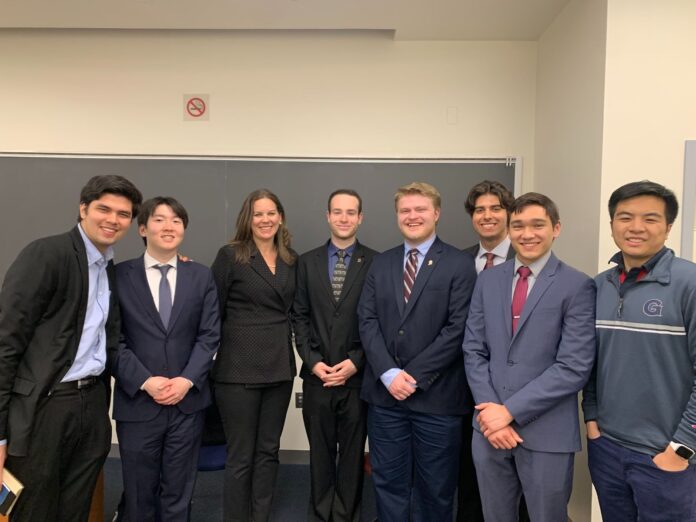![]()
Judge Britt Grant of the United States Court of Appeals for the Eleventh Circuit joined the Georgetown Federalist Society undergraduate chapter in the Intercultural Center Monday night to discuss stare decisis, commonly referred to as legal precedent.
Stare decisis has become a source of contemporary debate among the general public. Judge Grant hoped to provide clarity in the debate by investigating when it is acceptable to rule against precedent.
For Grant, regardless of precedent, the focus should be making the best decision. “There are some cases where I think now everyone agrees they were wrong,” she said.
Grant pointed to the case of Plessy v. Ferguson, which upheld the constitutionality of “equal but separate accommodations” for people of different races. No one today, she argued, would defend the constitutionality of racial segregation.
The difficulty lies in the subjective nature of discussing legal precedent. For Grant, the Supreme Court is a great example. She explained Justice Thomas has the strongest “anti-precedent” approach. Meanwhile, Justice Kagan is a staunch defender of observing legal precedent. Although they both sit on the Supreme Court, their views on stare decisis differ. “Everyone has their line,” Grant said.
Things get even trickier in the lower courts. Judges in the federal circuit courts must deal with both vertical and horizontal stare decisis. The Legal Information Institute at Cornell Law School defines horizontal stare decisis as “a court adhering to its own precedent” and vertical stare decisis refers to cases when a court “applies precedent from a higher court.”
Grant described to the attendees how she navigates such a complex system. She explained that when she hears an argument, she assesses both the merits of a decision and the scope of its impact. If a principle is wrong and has a profound negative impact, it may justify ruling against legal precedent. The bottom line is “just really trying to get it right,” she said. “Some precedents don’t deserve to stand forever.”
Attendance at Monday’s event signaled young people are immersing themselves in the debate about legal precedent. Recently, stare decisis entered the conversations of younger generations, especially college students, due to the Dobbs v. Jackson decision roughly nine months ago.
Three days after the Dobbs decision, a Marist poll found that a majority of Americans believed the decision was politically motivated rather than motivated by legal principles.
The issue quickly made its way to Georgetown’s campus. After the leak on May 2, 2022, many Georgetown students protested in front of the Supreme Court, hoping to protect the precedent established in Roe v. Wade. Others pointed out what they saw as flawed legal arguments made in Roe.
While the discussion around stare decisis continues at Georgetown, the focus of Monday was not on Dobbs or other political issues. Grant instead focused on her legal expertise from a technical standpoint. She emphasized that, given the immense consequences of legal decisions, considering precedent is a serious matter.
“People work hard to get it right,” Grant said. In the vast majority of the time, stare decisis creates less tension. “I became a judge at a relatively young age,” she said. “Over time, I’ve become more appreciative of the relative stability precedent can provide.”
Before the event ended, Grant made sure to leave advice for students interested in the legal profession. As former president of the Federalist Society at Stanford Law School, Grant wanted to share what made her successful. Her recommendation was simple.
“Take a risk,” she said.












